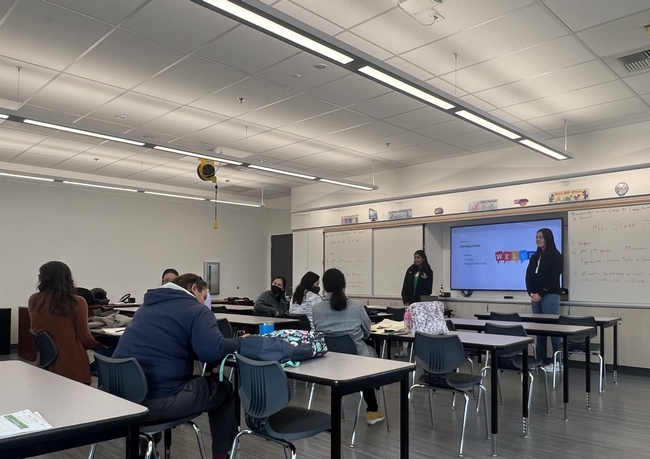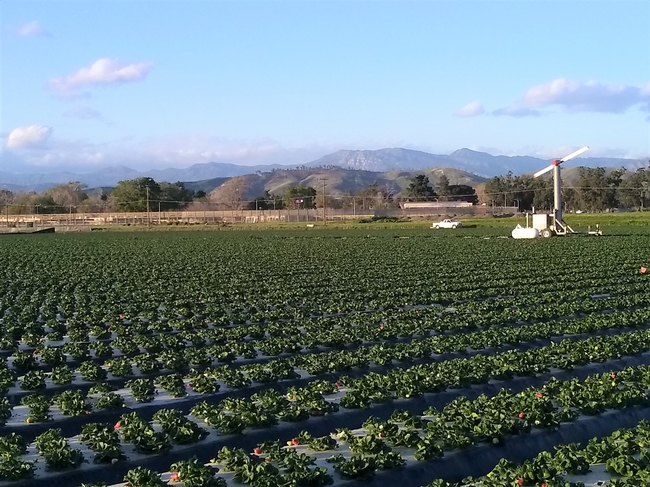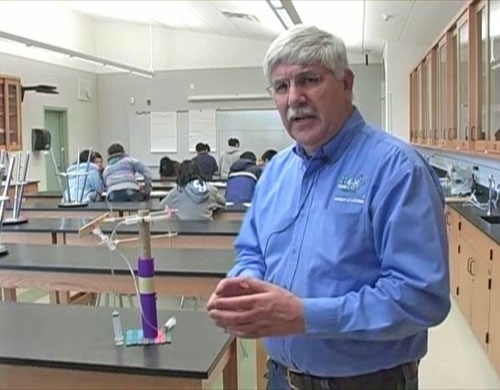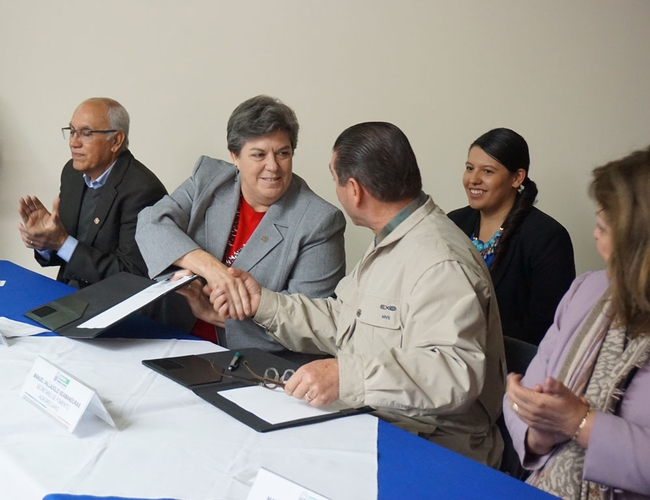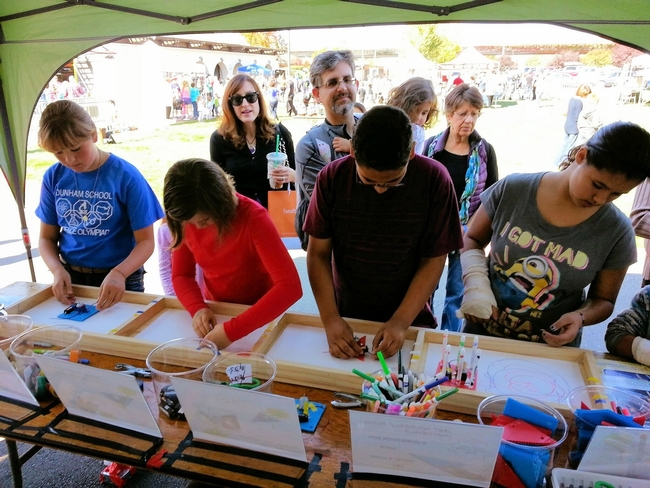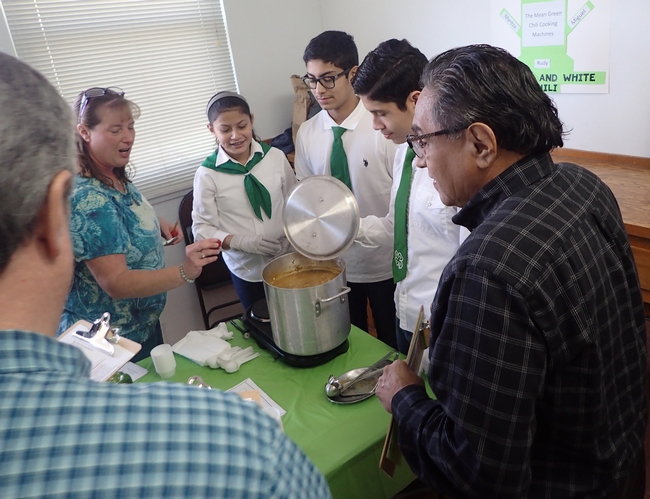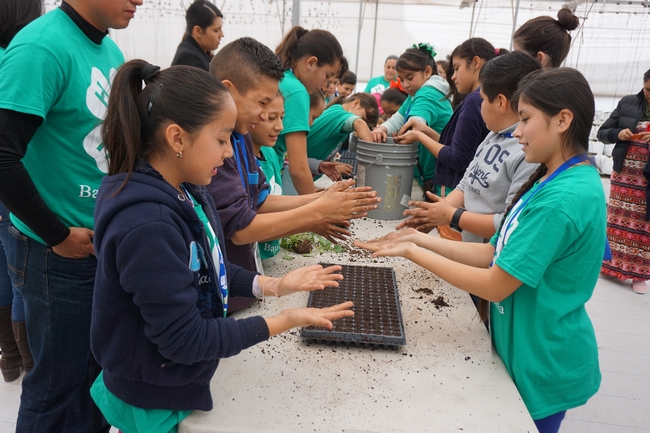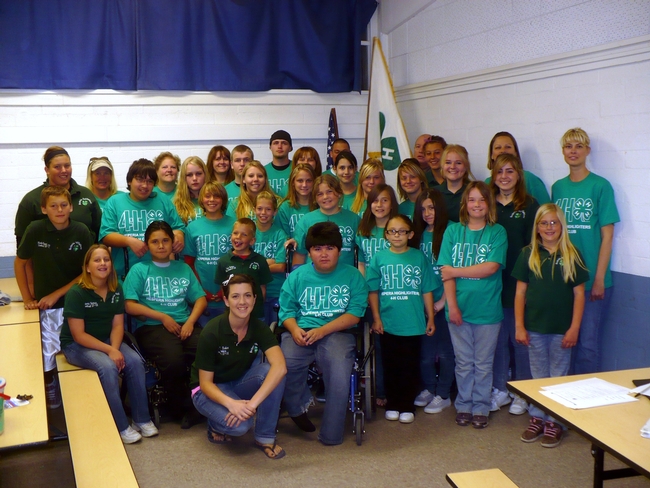- Author: Saoimanu Sope
National 4-H Council today (Sept. 29, 2023) announced that Michaela Auyeung of Los Gatos, is a runner-up for the 2024 4-H Youth in Action Award. Auyeung is recognized nationally for her commitment to providing STEM access and improving mental and physical well-being for girls in her community.
Auyeung, 17, provides free coding classes and instruction to girls through her program, Girls Who Love to Code. Through partnerships with two school systems, Girls Who Love to Code has engaged more than 250 girls while seeking to close the opportunity and education gap for girls in STEM. Auyeung also provided mental health workshops to aid students in addressing anxiety and created two school pantries to provide hygiene items, school supplies, and snacks to students in need. A senior in high school, Auyeung plans to continue to advocate for gender and socioeconomic equality in education through her outreach and beyond.
The 4-H Youth in Action Awards began in 2010 to recognize 4-H'ers who have overcome challenges and used the knowledge they gained in 4-H to create a lasting impact in their community. To learn more about the 4-H Youth in Action program and the 2024 runners-up, please visit http://4-H.org/YouthInAction.
About 4-H
4-H, the nation's largest youth development organization, grows confident young people who are empowered for life today and prepared for career tomorrow. 4-H programs empower nearly six million young people across the U.S. through experiences that develop critical life skills. 4-H is the youth development program of our nation's Cooperative Extension System and USDA, and serves every county and parish in the U.S. through a network of 110 public universities and more than 3,000 local Extension offices. Globally, 4-H collaborates with independent programs to empower one million youth in 50 countries. The research-backed 4-H experience grows young people who are four times more likely to contribute to their communities; two times more likely to make healthier choices; two times more likely to be civically active; and two times more likely to participate in STEM programs.
Learn more about 4-H at www.4-H.org, find us on Facebook at www.facebook.com/4-H and on Twitter at https://twitter.com/4H. To learn more about the California 4-H Program, visit: https://4h.ucanr.edu/.
- Author: Mike Hsu
UC Hansen Research and Extension Center to expand capacity at Camarillo location
The University of California Hansen Agricultural Research and Extension Center – the site of popular school field trips, 4-H programs, a UC Master Gardener demonstration garden, and numerous research trials on crops and landscape plants – is moving to a new location on the west side of Camarillo. The center was established through an endowment bequeathed to the UC by Saticoy farmer Thelma Hansen, who sought to support university research and extension activities benefiting Ventura County.
For the past 25 years, Hansen REC has been located on the historic Faulkner Farm in Santa Paula. At 27 acres, Hansen REC was the smallest of the nine RECs across the state operated by UC Agriculture and Natural Resources; in 2019, UC ANR leadership decided a larger property was needed to expand the center's capacity. The Faulkner Farm was sold in March 2021, but a portion was leased back to the UC to sustain its programs until a new location was identified.
In December 2022, the UC acquired a 114-acre farm property in Camarillo to serve as Hansen REC's new home. Moving structures and equipment from Faulkner Farm will take place over the next six months. Public programs at the new location are on hold until seismic retrofitting and other building upgrades are completed. A new research and educational facility also will be built, with an estimated opening date in 2027 or 2028.
“Our planning committee looked for a site on the Oxnard Plain that is representative of the coastal agriculture environment and conducive to research on Ventura County's high-value crops, such as strawberries,” said Annemiek Schilder, Hansen REC director. “We also sought a location with diverse soil types, access to sufficient irrigation water, and a low risk of flooding – and we're pleased that this Camarillo property meets most of our search criteria.”
Of the approximately 104 cultivable acres, 28 are certified organic, which will allow researchers to study organic as well as conventional crop production methods, Schilder noted. She said another bonus of the new location is its proximity to California State University, Channel Islands and the Rodale Institute California Organic Center, which are both potential partners for future research and a student organic farm on site.
Initial plans for the new Hansen REC facility include offices, conference rooms, laboratories, greenhouses, a demonstration kitchen, and indoor and outdoor education areas. The center will aim to be water-efficient and energy-neutral, relying on solar panels for much of its energy usage. The UC Cooperative Extension Office in Ventura is also slated to move to the new facility.
“We fully expect Hansen REC to become a vibrant research and education hub that provides science-based solutions and is responsive to the needs of agricultural, rural and urban communities and the environment in Ventura County,” said Glenda Humiston, UC vice president for agriculture and natural resources. “We're excited to expand current programming while bringing in new educational opportunities, such as the UC Master Food Preserver and Master Beekeeper programs.”
- Author: Jeannette E. Warnert
Richard Mahacek, UC Cooperative Extension 4-H youth development advisor in Merced County from 1976 to 2012, will be inducted into the National 4-H Hall of Fame on Oct. 19 for his lifetime achievements and contributions to 4-H.
Mahacek is one of 15 people to be inducted during the ceremony at the National 4-H Youth Conference Center in Chevy Chase, Md.
The National 4-H Hall of Fame honorees are nominated by their home states, National 4-H Council, the National Association of Extension 4-H Agents or 4-H National Headquarters/National Institute of Food and Agriculture based upon their exceptional leadership at the local, state, national and international levels.
Honorees will receive a National 4-H Hall of Fame medallion, plaque and memory book during the ceremony. The National 4-H Hall of Fame was established in 2002 as part of the Centennial Project of the NAE4-HA in partnership with National 4-H Council and National Institute of Food and Agriculture, USDA. For more information about the National 4-H Hall of Fame event and past recipients, visit http://www.4-H-hof.com/
“We are proud to recognize the 2018 National 4-H Hall of Fame honorees for the passion, dedication, vision and leadership they have shown toward young people during their many years of service to 4-H,” said Jeannette Rea Keywood, National 4-H Hall of Fame Committee chair.
Mahacek joined a 4-H Club in Sonoma County when he was 10. During his 35-year 4-H career, Mahacek placed an emphasis on mechanical sciences and engineering projects. His work included development of curricula and activities in science processes, robotics, computers, GIS/GPS, bio-security and environmental issues, such as watersheds and wildlife habitats.
In 1988, Mahacek was a member of the team that developed the 4-H SERIES (Science Experiences and Resources for Informal Educational Settings) curriculum, which was funded by the National Science Foundation and Kellogg. SERIES was the first comprehensive pragmatic science education curriculum to join 4-H's traditional projects. In 2004, Mahacek served on the national leadership team for 4-H SET (Science, Engineering and Technology), a program that succeeded SERIES. Now known as STEM (Science, Engineering, Technology and Math), the project aims to enhance young people's interest in developing the knowledge and skills needed for the 21st century's technically oriented careers.
The crowning achievement of his career was the development of the 4-H Junk Drawer Robotics curriculum in 2011. The curriculum shows how to engage children in building robotic devices with rubber bands, Popsicle sticks, medicine dispensers and bamboo skewers – the kinds of things people already have around the house. The robotics program develops skills that go beyond science and engineering. The children learn communications, teamwork and critical thinking.
Junk drawer robotics is one part of a three-track robotics curriculum. The other tracks are virtual robotics, in which participants build virtual robots on computers, and robotics platforms, which employs commercial robot building kits for materials. The package of robotics programs was the No. 1 selling 4-H curriculum in the nation in 2011. Mahacek was also a driving force in the community in founding the UC Merced Engineering Service Learning Program Castle Science and Technology Center. This facility utilized a former US Air Force facility to provide hands-on science experiences to the youth of the county.
Mahacek received many honors for his contributions to 4-H and UC Cooperative Extension. In 1988 he received distinguished service awards from the state and national 4-H associations. The Merced County Farm City Ag Business Committee presented him its Agri-Education Award in 1992. Mahacek received the “Hands-On Heroes Award” at the Merced County Children's Summit.
Mahacek said the 4-H program has evolved during his tenure, but it has not changed its core objectives. “We went from being a predominantly ag program to including many other topics. Our members used to live in just rural settings, but now they come from the suburbs and urban neighborhoods,” Mahacek said. “But we're still promoting the concept of working together and gaining confidence by learning practical skills.”
- Author: Jeannette E. Warnert
California State Senator Ben Hueso will honor California and Baja California 4-H with a resolution in the State Senate at 2 p.m. April 2 to recognize the cross-border team that established a 4-H Club in Mexicali, Baja Mexico, in January 2017.
Last year, UC ANR Vice President Glenda Humiston signed a memorandum of understanding with the Baja California Secretary of Agriculture Development, Manuel Vallodolid Seamanduras, to offer UC's 4-H expertise to youth south of the border. The agreement increases the academic, scientific, technological and cultural cooperation that are part of UC President Janet Napolitano's Mexico Initiative.
Senator Hueso's resolution attests to the value of building relationships as a means of cooperative engagement between Mexico and California on shared concerns, such as drought and global climate change. The resolution notes that the creation of a 4-H Club in Mexicali is an inspiring reminder that the need for education doesn't stop at the border.
Senator Hueso represents the 40th District, which includes parts of San Diego County and all of Imperial County, running along the entire border between California and Mexico.
|
What: |
Resolution honoring the establishment of a 4-H Club in Mexicali, Baja Mexico. |
|
Where: |
California State Senate |
|
When: |
2 p.m., Monday, April 2, 2018 |
|
Who: |
Manuel Vallodolid Seamaduras, Secretary of Agriculture Development in the State of Baja California, Mexico (Secretaría de Desarrollo Agropecuario del Estado de México - SEDAGRO) Carlos Orozco Riesgo Belem Avendaño Ruiz Guillermo Gonzalez Rubio Agustin Manuel Velazquez Bustamante Mark Bell, Ph.D., Vice provost, UC Agriculture and Natural Resources Shannon Horrillo, Ph.D., 4-H Youth Development statewide director Lupita Fabregas, Ph.D., 4-H Youth Development assistant director for diversity and expansion Claudia Diaz Carrasco, 4-H Youth Development advisor, Riverside & San Bernardino, Calif. |
|
Contact: |
(English) Jeannette Warnert, UC ANR Strategic Communications, (559) 240-9850, jewarnert@ucanr.edu
|
- Author: Jeannette E. Warnert
Latino youth participation in 4-H is on the rise, according to a report on the first year of UC Agriculture and Natural Resources' three-year 4-H Latino Initiative.
Increasing Latino participation in 4-H has been a priority for some time. Over the last five years, participation in 4-H increased 41 percent; Latino participation increased 173 percent. While growing, the fraction of 4-H members who are Latino still falls below their proportion of the state's population.
“We're just getting started in implementing a new statewide comprehensive plan to reach Latino youth,” said Lupita Fabregas, assistant director for 4-H diversity and expansion. “We know 4-H helps prepare kids for success in college and life. We're thrilled to be involving more Latinos.”
When 4-H was formed 100 years ago, it was an educational club for farm kids. Often seen in spotless white and kelly green garments, participants raised animals, gardened, cooked and sewed while learning leadership and public speaking skills. In the latter half of the 20th century, when California became more urbanized, 4-H began adding education in broader program areas, such as rocketry, robotics, computer science and environmental stewardship.
California demographics were also changing. The state became more ethnically diverse. In 2014, Latinos surpassed whites as the largest ethnic group. But they weren't reaping the benefits of 4-H membership at the same rate.
UC Agriculture and Natural Resources (UC ANR) the 4-H parent organization in California, researched the reasons for low Latino 4-H membership, and realized there were opportunities to develop new program models and methods to reach minority populations without changing the 4-H core values.
“As an organization, we identified the values and core elements of 4-H that make us unique,” said Shannon Horrillo, UC ANR statewide 4-H director. “We decided that no matter how we adapted the program, we would not stray from those foundational elements.”
Core elements include youth leadership, youth-adult partnerships, life skills learning, community service and service learning, the 4-H Pledge, and well-known 4-H name and green four-leaf clover emblem. It became apparent that some of the requirements that were part of the community club tradition – such as the required meeting attendances, parliamentary procedures and officer structure – were barriers to extending the program to a more diverse population.
“We can be more flexible in how the program looks and in requirements while maintaining what has made 4-H an impactful program for more than 100 years,” Horrillo said.
New club models were launched, including special interest clubs (called SPIN clubs), in-school clubs and after-school clubs.
4-H membership began looking a lot more like the highly diverse citizenry in the state's densely populated cities. In 2016, UC ANR allocated funds to employ bilingual 4-H community education specialists in seven California counties for three years to further boost Latino participation. The specialists are making a concerted effort to reach out to Latino youth, parents, community leaders, schools, churches and other organizations to extend 4-H programming to wider and more diverse audiences in Kern, Merced, Monterey, Orange, Riverside, Santa Barbara and Sonoma counties.
“Our staff are making strides in adapting 4-H to be culturally relevant for Latino youth,” Fabregas said. “This work will help all youth feel welcome, appreciated and valued in 4-H programs.”
The new effort will include a fundraising program to maintain and expand the emphasis on Latino outreach after the current three-year funding period concludes. The UC ANR Development office is working with the 4-H Latino Initiative to develop a plan to combine local fundraising, grant awards, contracts with schools and agencies, and foundation and private gifts to keep the program going beyond the current three-year term.
“Though the progress to date has been significant, we know that we'll need to hire more community educators to strengthen our resources if we're going to bring 4-H to a great number of Latinos,” said Andrea Ambrose, UC ANR director of development.


